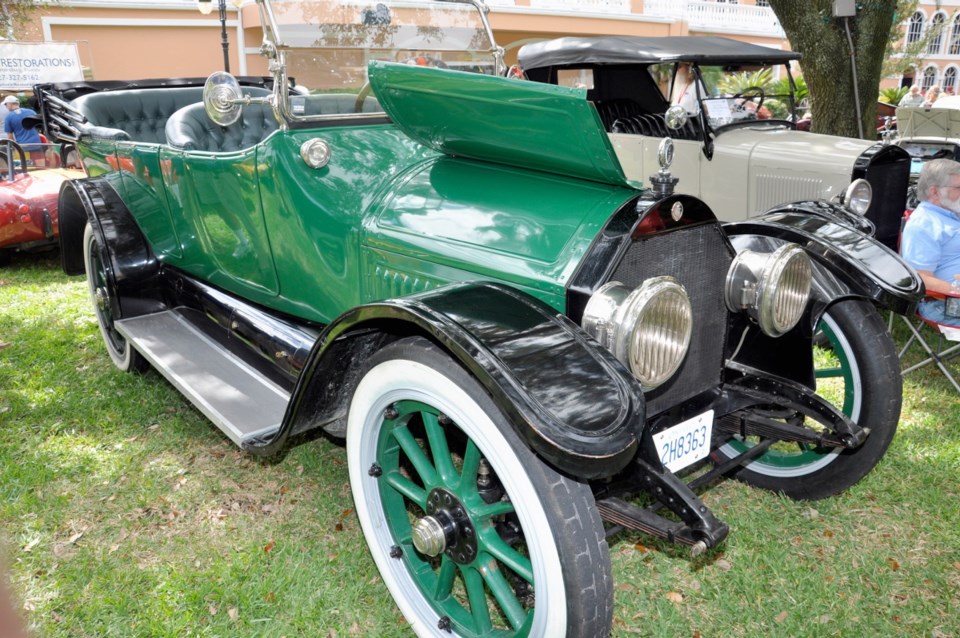The V-16 concept car that Cadillac showed in 2003 (see below) was a fitting gesture because Cadillac has been a resolute champion of the V-type engine, particularly V-8s, for most of its 116-year history. Ford also became strongly associated with V-8s, but Cadillac was the most consistent.
Cadillac didn’t invent the V-type layout, nor was theirs the first production V-8. The 1910 French De Dion-Bouton is credited with that, but Cadillac did a great deal to popularize it.
The first 1902 Cadillac was a quality product, thanks to the insistence on precision by its meticulous general manager, Henry Leland. It began with one cylinder and added a four in 1905 as it began its move into the luxury market.
In 1912, Cadillac startled the automotive world with the groundbreaking electric self-starter that made driving convenient for anyone, not just those able to crank an engine. It made larger engines practical and paved the way for Cadillac to consolidate its luxury status.
Cadillac discontinued its four in 1914 and went exclusively to a 5.1-litre, 70-horsepower V-8 for 1915. Its smoothness and performance were so well received that 13,000 were sold in the first year. From then on, the V-8 was Cadillac’s mainstay engine.
During the First World War, more than 2,000 Cadillacs were shipped overseas for military use, consolidating the V-8’s reputation for performance and reliability. By 1925, Cadillac had built more than 180,000 of them.
In spite of the onset of the Great Depression, Cadillac broadened its V-type engine offerings in 1930 with cars conceived in the more prosperous “Roaring Twenties.”
First was the V-16 in the spring of 1930, joined a few months later by a V-12 as a 1931 model (the V-8 continued). In one stroke, Cadillac snatched luxury-car leadership from Packard’s V-12.
The V-16 designed by Cadillac engineer Owen Nacker was a marvel of mechanical engineering beauty. Its 45-degree bank angle made it tall and imposing. Metal plates and manifolds were enamelled and polished, and wiring and plumbing were concealed under plates and covers.
The overhead valves had hydraulic lifters for quiet running, and it had dual exhausts. It was like two straight-eights on a common crankcase, and its 7.4 litres developed 165 horsepower at 3,400 rpm. The smaller 5.7-litre V-12 had 135.
The 12 was discontinued in 1937, and the original V-16 was replaced with what some considered an inferior design: a side-valve V-16. With a 135-degree bank angle it appeared almost flat, and paled in comparison to the stately original overhead-valve V-16.
Cadillac modernized its V-8 for 1936 with “monobloc” construction (cylinder block and crankcase in one casting). This engine and the Hydra-Matic transmission did yeoman service powering military tanks during the Second World War.
Cadillac returned to civilian life in 1946, but there was something new in the works. Led by engineers Edward Cole and Harry Barr (Cole later became a GM president), Cadillac engineered a new technological marvel.
Based on pioneering work on high compression and knock-resistant “ethyl” gasoline by GM’s brilliant research chief Charles Kettering and engineer Thomas Midgley, Cadillac along with Oldsmobile set the direction for modern American engine technology with an all-new 1949 short-stroke, overhead-valve, high-compression V-8.
The 1949 Cadillac V-8 displaced 5.4 litres (331 cu. in.) and produced 160 horsepower. Then Chrysler rocked the industry in 1951 with its hemispherical combustion chamber “Hemi” V-8, which tweaked Cadillac by developing 180 horsepower from exactly the same 5.4 litres.
Cadillac countered in 1952 with an industry-leading 190 horsepower, and the horsepower race was on. By 1970, Cadillac’s Eldorado V-8 had reached a gargantuan 8.2 litres (500 cu. in.) and 400 horsepower.
Also in the 1970s, Cadillac was involved in GM’s policy of using GM corporate engines across all car lines rather than divisional engines. Thus, you might find an Oldsmobile-designed engine under your Cadillac’s hood.
Two 1970s oil crises resulted in fuel-consumption legislation that drove Cadillac to such measures as Oldsmobile diesels, Buick V-6s and even a Chevrolet overhead-valve inline four in its subcompact Cimarron, Cadillac’s first four since 1914. It retained its V-8.
In the 1980s, Cadillac’s “modulated displacement V-8-6-4” operated on eight, six or four cylinders depending on load. It didn’t work very well with then-available technology, and was discontinued.
Finally, Cadillac got back to designing its own powerplants. Its new-for-1993 twin-overhead-cam Northstar V-8 was another engine-technology milestone. a fine tribute to Cadillac’s 90 years of V-type engines.
It would indeed be fitting if Cadillac again startled the world with a V-16, but, alas, it is unlikely. Under current conditions, smaller engines predominate, but Cadillac continues to offer a V-8, currently a twin-turbo V-8, as it has for more than 100 years. No other marque can make that claim.



